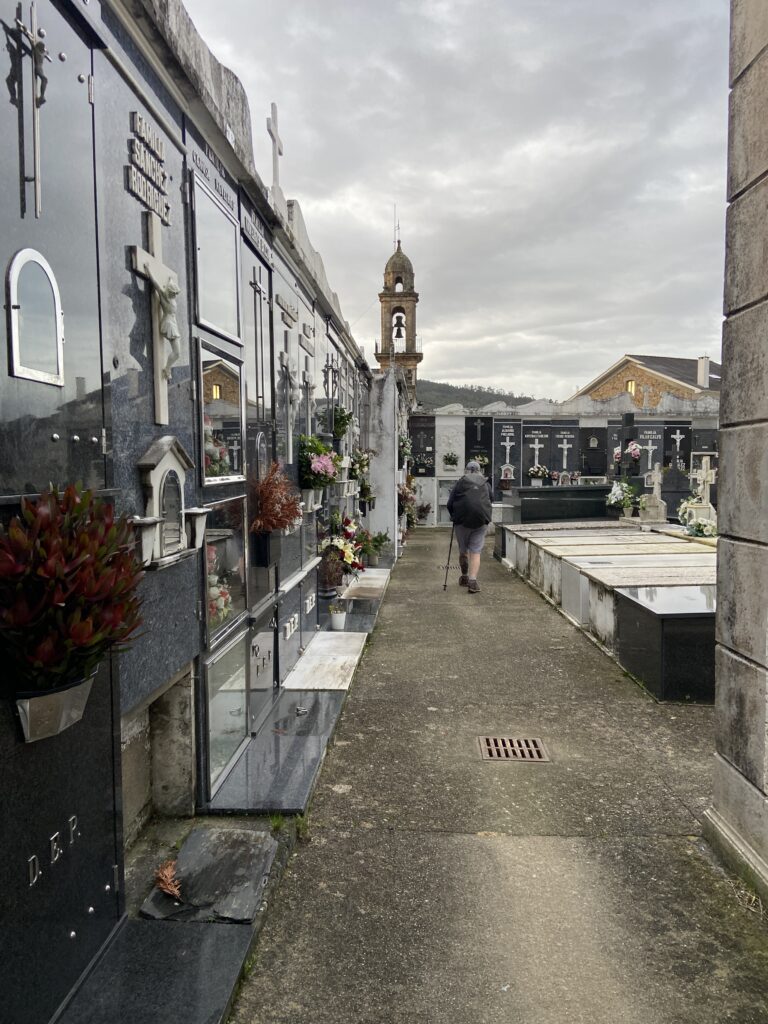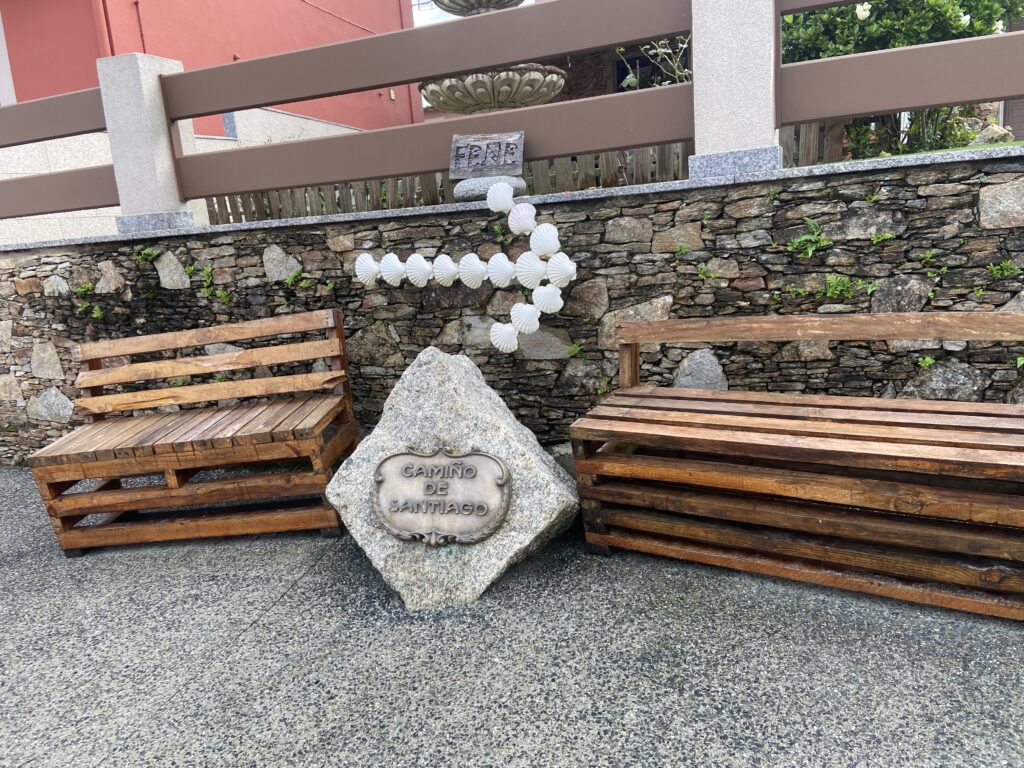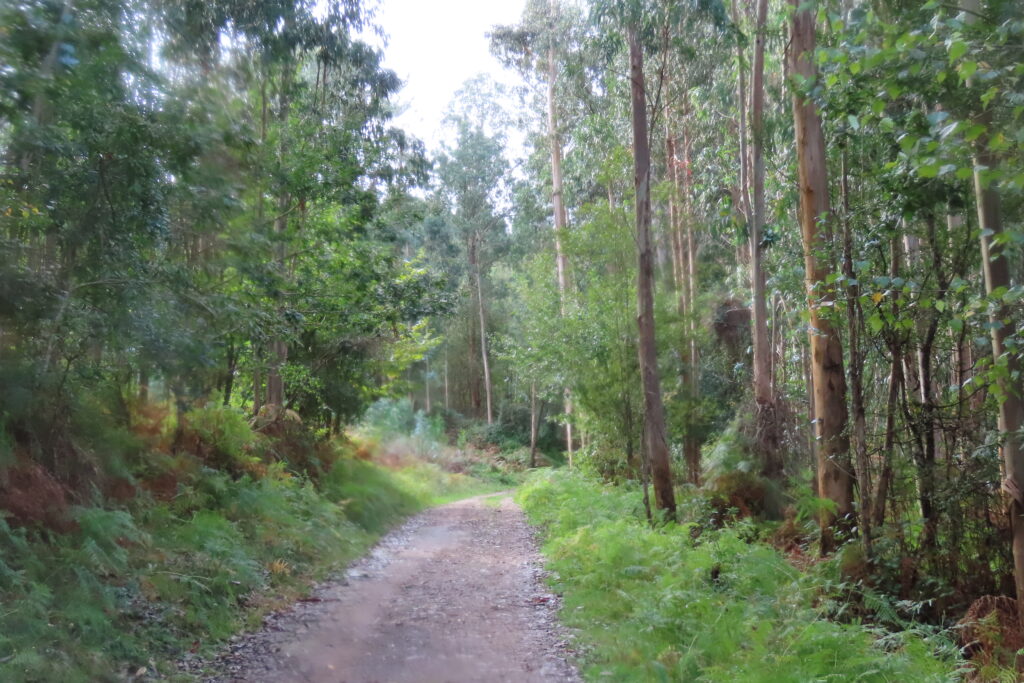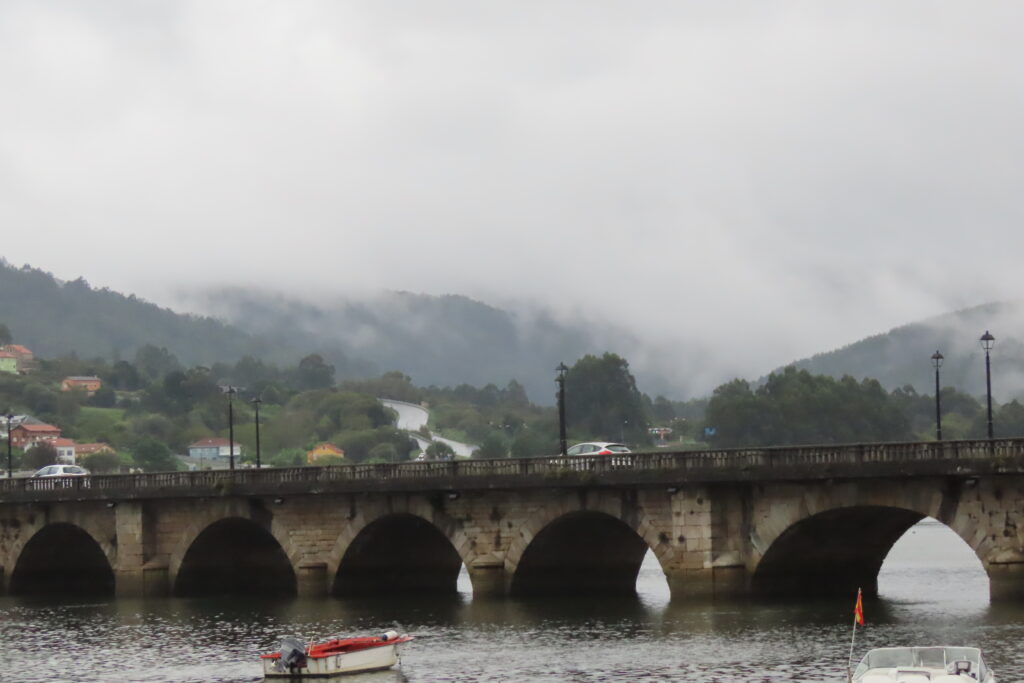I woke early, feeling surprisingly refreshed. The room seemed very quiet, and I thought the reports of snorers along the Camino must have been exaggerated until I took out my earplugs and realised they had been very effective at masking the noise!
Rachel and I took full advantage of the tiny kitchen. In the absence of a kettle, I boiled a pan of water on the faded electric hob for coffee, and we breakfasted on cereal bars. As it was raining, we delayed our departure until it stopped, eventually leaving our shelter for the grey, damp morning.
The original Camino route follows the main road through Narón and into the suburbs of Neda. We were treated to a spectacular pink and orange sky as the sun broke briefly through the clouds, although we were aware that more rain showers were forecast. Passing the Iglesia Santa Maria we were disappointed to find it closed, as were most of the churches on the route, but we explored the little graveyard with the now familiar ornate family tombs.

Towns in this region of Spain appear to consist of an eclectic mix of house styles. Grand, well-maintained three-storey properties rub shoulders with tumbledown derelict cottages which, if they were in the UK, would have either been torn down or hidden behind layers of fencing to make them inaccessible for would-be urban explorers.
We climbed steeply out of Neda, spectacular views opening up back to Ferrol and over a couple of road bridges carrying traffic high above the green valley. As we gazed, our view became gradually obliterated by cloud and we were forced to rummage in our packs for waterproofs against a sudden shower.

It was a relief to reach the town of Fene. Rachel and I eagerly headed into the first bar we came to for coffee and a plate of churros.
To our delight, after leaving Fene the Camino took us uphill through a forest of scented eucalyptus trees, where we discovered a welcome honesty box containing cartons of apple juice. The climb had made us sweat so we purchased and eagerly devoured a couple.
We faced a gradual downhill along switchback roads towards the coastal town of Pontedeume, which is reached by a long bridge over an estuary where small coloured boats bobbed on the grey water. We were eager to find a bed for the night in the municipal aubergue and headed to the old tower where bookings must be made in the Tourist Office. Unfortunately, we timed our arrival with siesta time, so we sourced some sadly mediocre food before heading back to join the queue and secure our beds.

Initially we found the ‘first come, first served’ routine of the public albergues a challenge as we would walk through the day, not knowing for sure we would easily find somewhere to sleep that night.
The albergue in Pontedeume is very basic compared with the one in Neda. It consists of a large split-level room containing very squeaky bunk beds, a room for boots and a room each for men and women containing one shower one toilet. We felt we had been spoilt last night, but we were grateful, especially as the rain had now started in earnest.
Pontedeume has a large, attractive church, where we were privileged to attend mass. Although we struggled to follow the service we appreciated the atmosphere. A blessing was given to pilgrims and we were each presented with a tiny scallop shell, which I have treasured.

Unwilling to return too early to the albergue, we lingered in a café over a glass of red wine with Richard and Kent, savouring the joyous atmosphere created by a group of Spanish woman laughing and chatting on a husband-free night out.
Eventually it was time to leave the bar and head back to the albergue and our top bunks before lights out. We changed into nightclothes as silently as possible and climbed into our beds, wincing at every squeak, listening to the snores that were already permeating the room and facing the probability of disturbed sleep. This would potentially be a long night.


Leave a Reply